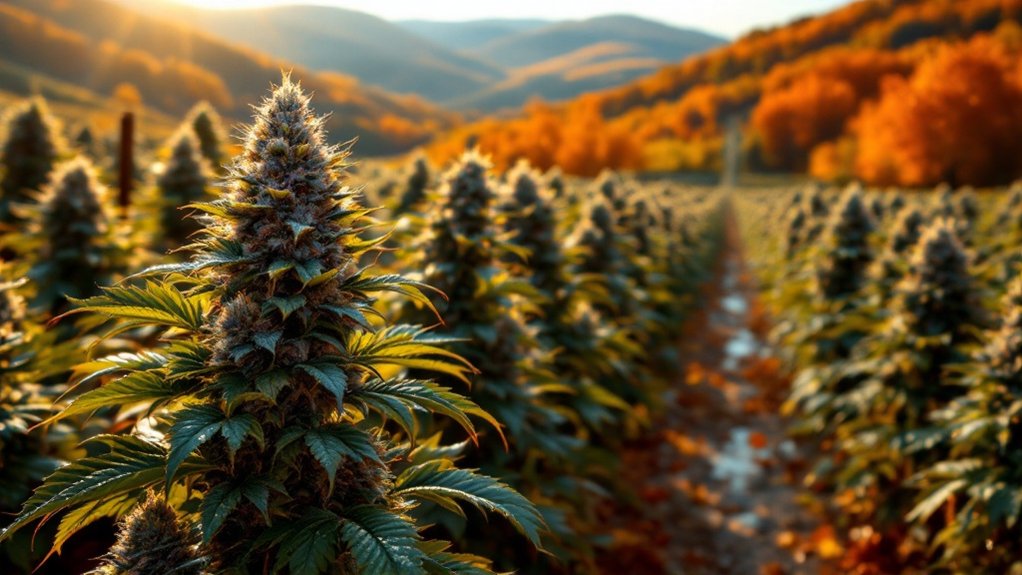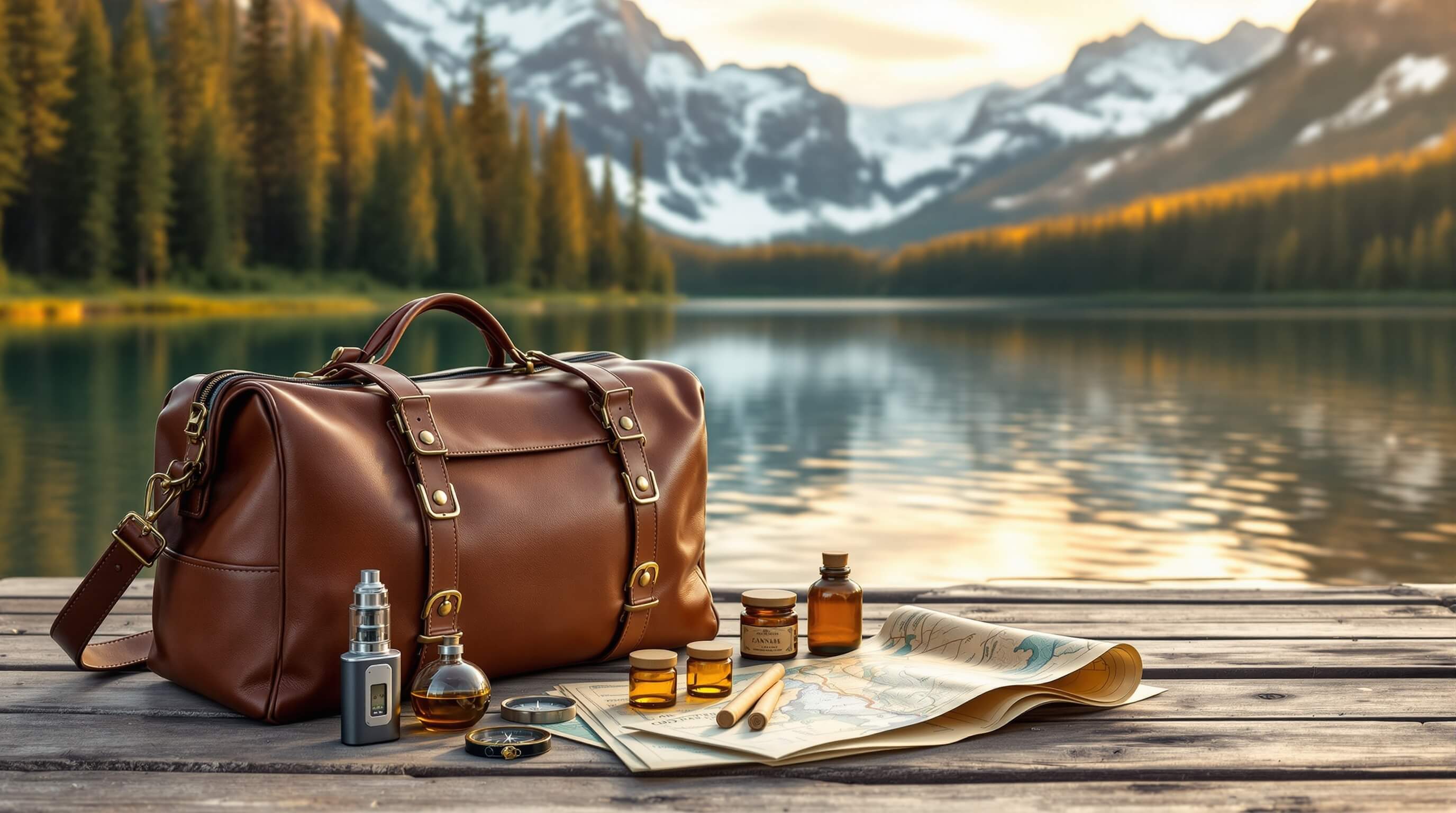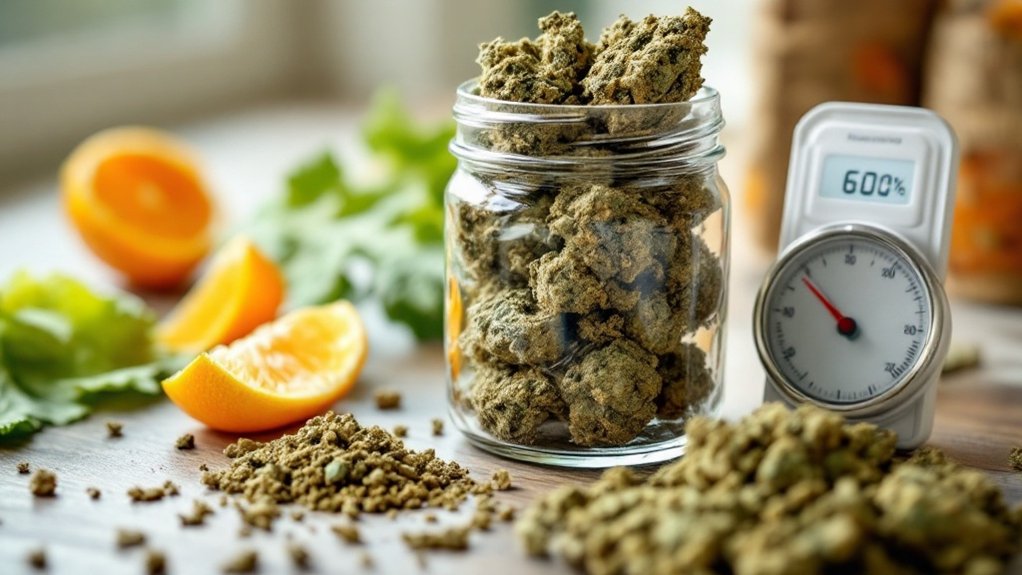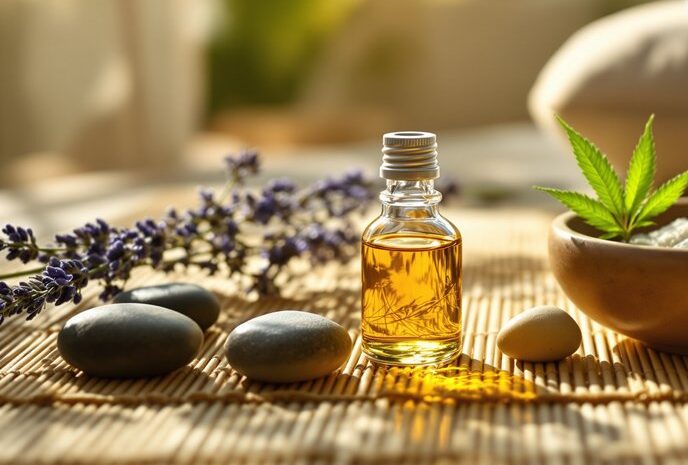Cannabis farm tours are transforming fall travel itineraries across legal states as harvest season reaches its September-through-October peak. Agricultural tourism operators report unprecedented bookings for behind-the-scenes cultivation experiences, with California’s Mendocino County and Oregon’s wine country leading visitor numbers. These reservation-only tours offer everything from guided tasting sessions to hands-on trimming workshops, but don’t expect to take home any souvenirs. The real draw lies in what most tourists never see happening behind those greenhouse doors.
Peak Harvest Timing and Seasonal Farm Tour Opportunities
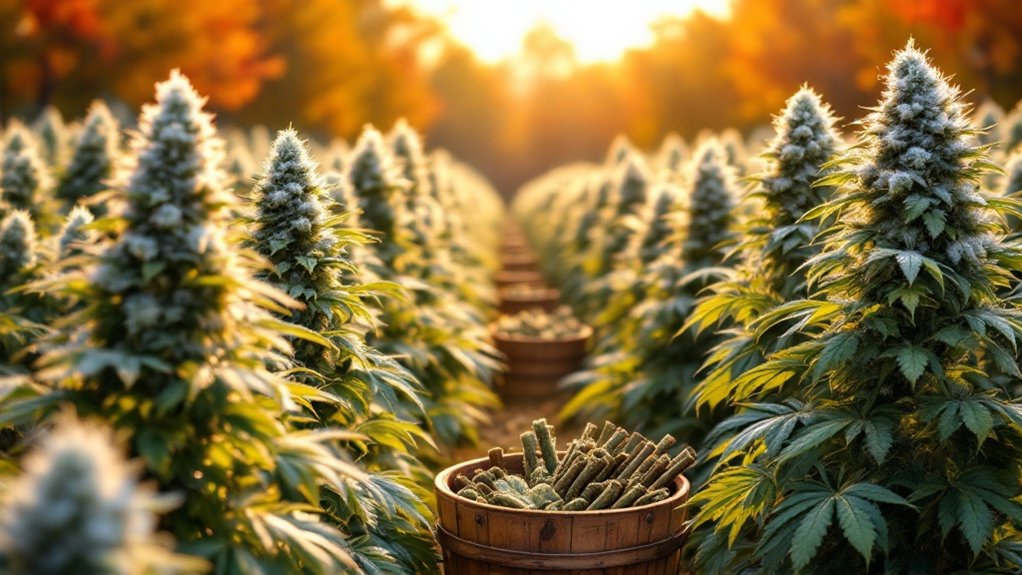
As autumn temperatures begin to drop across cannabis-growing regions, outdoor cultivation sites transform into bustling harvest destinations that draw thousands of agritourism visitors each year.
The industry’s Croptober phenomenon peaks between late September and mid-October, when indica strains reach maturity after their typical 8-9 week flowering cycle. Sativa varieties extend the season into November with their longer 10-12 week timeline.
Farms capitalize on this concentrated harvest window by offering reservation-only experiences that showcase the entire cultivation process. Visitors witness trichome inspections, where milky formations signal peak THC development, and observe pistil color changes from white to amber. Many experienced cultivators time their harvest activities according to moon phases, believing that the waning moon period enhances the final flavor and quality of their crops. Professional growers often prefer working with established clones because they can reduce the total growing time to just 3-5 months compared to seed cultivation. Hydroponics systems are especially popular on display farms, as they can speed up growth by approximately 25% compared to traditional soil methods.
Special harvest festivals and farm-to-table dinners coincide with state cannabis event calendars, creating premium agritourism opportunities that many operations depend on for seasonal revenue generation.
Premier Cannabis Farm Destinations Across the United States
When harvest season arrives, cannabis enthusiasts discover that America’s legal cannabis states have transformed into sophisticated agritourism destinations rivaling traditional wine country experiences.
California’s Emerald Triangle leads the pack, spanning Humboldt, Mendocino, and Trinity counties as the nation’s largest cannabis-producing region. These farms offer guided tours, on-site tastings, and educational experiences focused on organic cultivation methods.
Colorado pioneered cannabis tourism with Denver boasting over 10 dispensaries per 100,000 residents. Luxury destinations like Aspen pair farm-to-consumer experiences with outdoor activities, while Boulder provides hands-on glassblowing and cooking classes. The state’s cannabis tourism market has contributed to projections that the industry will reach $23.73 billion by 2030.
Oregon’s Willamette Valley cleverly integrates cannabis farms with established wine tourism, creating dual-experience tours. Portland’s emphasis on artisanal production methods creates unique small-batch experiences that highlight the craft nature of local cannabis cultivation. The Pacific Northwest rounds out premier destinations, with Seattle emphasizing sustainability-focused cultivation tours that showcase environmentally conscious practices.
Behind-the-Scenes Agricultural Experiences and Educational Components

Beyond the scenic landscapes and sophisticated dispensaries, cannabis farms now offer unprecedented access to working cultivation facilities where visitors can witness the complete agricultural cycle firsthand.
Tourists explore indoor greenhouses and outdoor fields during guided comparisons of cultivation methods, from traditional soil growing to cutting-edge bioponic systems. Hands-on trimming workshops provide intimate exposure to harvest processes.
Visitors gain comprehensive cultivation insights through immersive greenhouse tours and hands-on participation in professional trimming workshops.
Educational components dive deep into plant science fundamentals. Visitors learn cannabinoid development, breeding programs for new cultivars, and strain differences between Indica, Sativa, and hybrid varieties.
Many tours include flower tastings to explore aromatic profiles—a surprisingly sophisticated sensory experience. These tastings have evolved to mirror high-end culinary experiences where terpene profiles are discussed similar to wine tastings.
Historical presentations cover the journey from prohibition to legalization, while sustainability demonstrations showcase closed-loop farming systems. Local cannabis historians provide insights into regional farming traditions and the unique cannabis appellation characteristics that define specific growing areas. Knowledgeable teams demonstrate eco-friendly growing methods that prioritize environmental responsibility throughout the cultivation process.
Farm-to-table dinners featuring terpene-infused dishes cap off these extensive agricultural experiences.
Booking Requirements, Pricing, and Tour Logistics
While these immersive agricultural experiences promise unique insights into cannabis cultivation, securing a spot requires careful advance planning and adherence to strict regulatory requirements.
Prospective participants must be 21 or older with valid government-issued ID, plus sign detailed waivers acknowledging state cannabis law compliance.
Tour operators recommend booking 2-4 weeks ahead during peak harvest season from September through October. Group sizes typically range from 2-11 participants maximum.
Half-day experiences can cost around $200 per person, while full-day adventures running around $300, including transportation and lunch. Seasonal pricing premiums apply during weekends and special events. For those preferring independent travel, a self-drive option provides flexibility while maintaining access to curated farm experiences.
Tours operate June through October, with common departure windows of 9:00 am-1:00 pm or 2:00 pm-6:00 pm.
Professional drivers provide round-trip transportation from central meeting points, though hotel pickups can be arranged in certain regions. Each tour experience lasts approximately two hours and includes educational components covering cannabis cultivation basics.
Essential Preparation Tips and Compliance Guidelines for Visitors

Since cannabis facility tours operate under stringent regulatory frameworks, visitors must navigate an extensive web of preparation requirements that extend far beyond simple age verification.
Government-issued photo identification remains mandatory for entry, with most facilities requiring visitor logs documenting arrival times and tour purposes. Security protocols vary greatly between operations, some locations issue temporary photo badges while others assign dedicated escorts throughout the experience.
Security measures range from temporary visitor badges to full escort accompaniment, reflecting the industry’s commitment to regulatory compliance and operational transparency.
Dress codes prioritize safety over style. Closed-toe shoes and conservative attire become essential for greenhouse environments, where loose accessories pose contamination risks. Facilities typically provide personal protective equipment including disposable shoe covers and lab coats. Visitors with long hair may need to wear bouffant caps or head covers to maintain sanitary conditions.
Behavioral compliance proves non-negotiable. Photography restrictions dominate sensitive cultivation areas, while strict no-sampling policies govern visitor conduct. Many tours conclude with shared meals featuring locally sourced ingredients that complement the educational experience.
Most operations require advance regulatory approval, making spontaneous visits impossible across this highly regulated agricultural sector.
